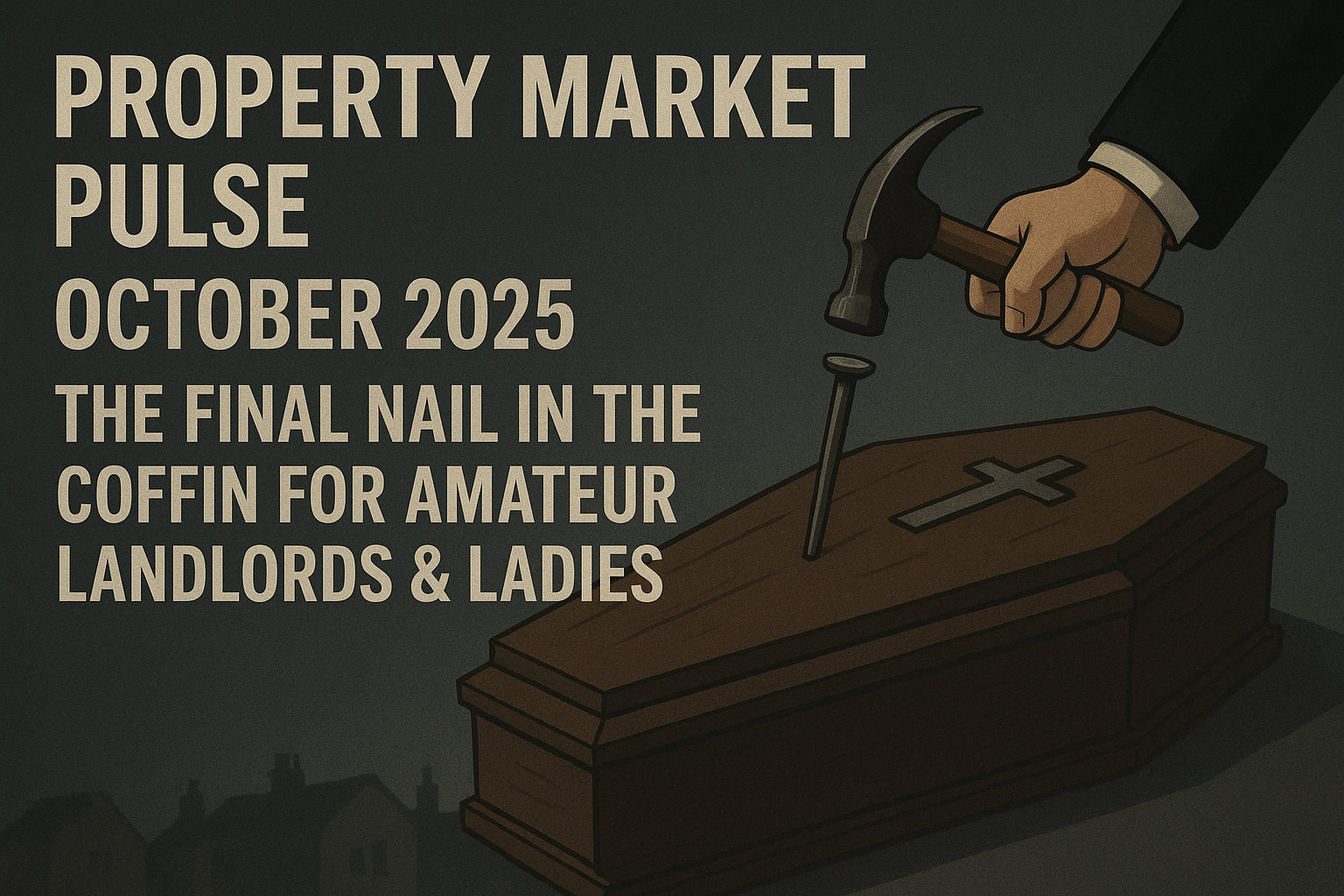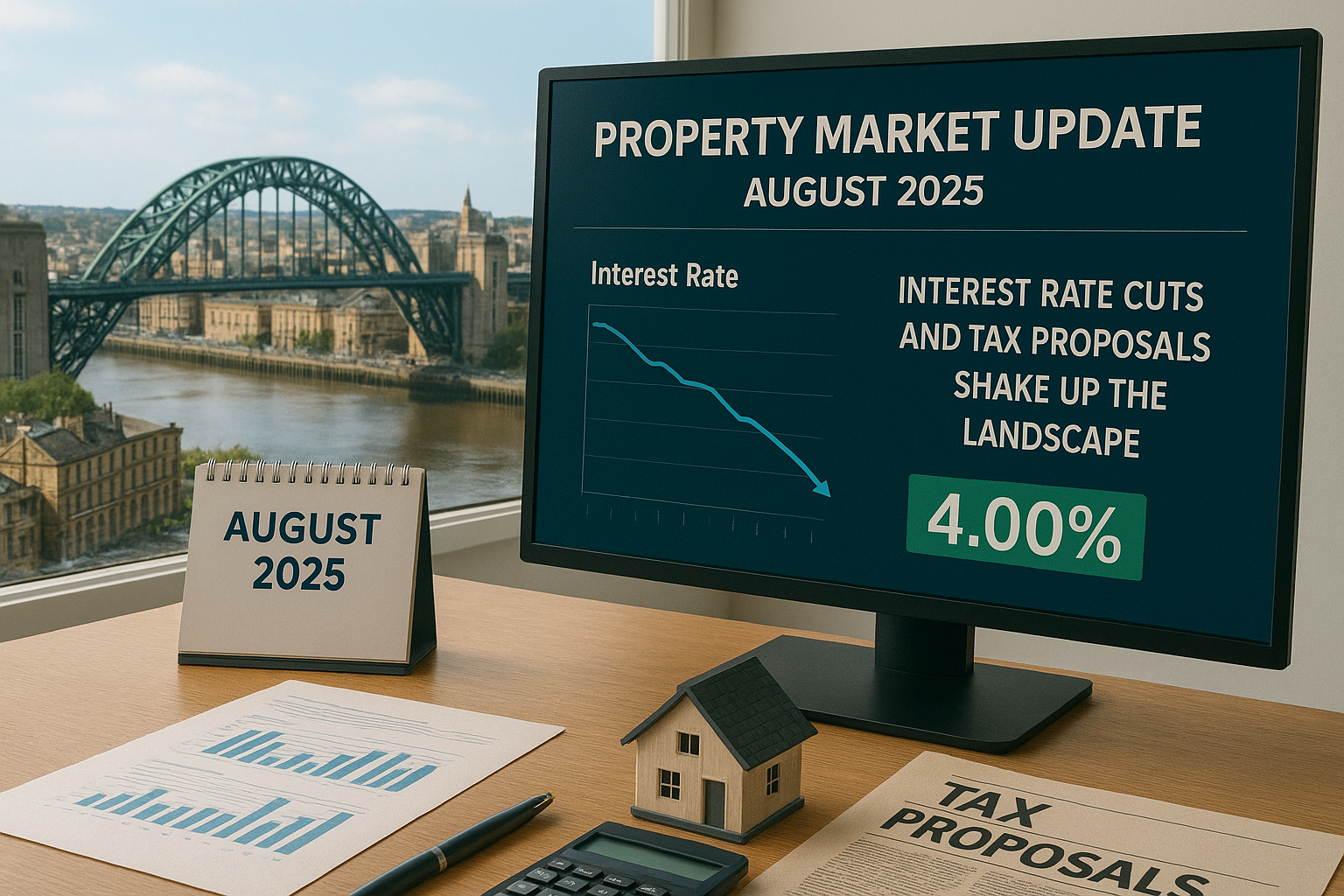UK Property Market Update: What Happened in June 2025 and What It Means for Investors

House prices stalled. Buyer demand picked up. Supply increased.
The UK property market is at a turning point this summer, with mixed signals creating both challenges and opportunities for investors and homeowners alike.
Let's break down what's happening and why it matters...
The Big Picture: June 2025 Market Snapshot
House Price Trends
The latest figures show a market that's cooling after last year's growth:
- Halifax index: 0.0% monthly change with the average price at £296,665 (2.5% higher year-on-year, down from 2.6% in May)
- Nationwide HPI: A 0.8% month-on-month decline and just 2.1% annual growth (down from 3.5% in May), with average prices around £271,619
- Zoopla: Modest 1.4% annual growth as of May (published in June), though sales activity increased with 14% more homes on the market
- Rightmove: A rare June decline in asking prices, down 0.3% to £378,420
The numbers tell a clear story - price growth is slowing across all major indices.
Regional Variations
Not all areas are feeling the same effects:
- Northern England saw around 3.1% annual house price growth
- Southern England managed about 2.2%
- Northern Ireland led the way with impressive 9.7% growth for Q2 2025
The North East continues to outperform other English regions with 6.3% year-on-year growth and a 2.2% monthly increase in May. Newcastle upon Tyne stands out with prices up 13.4% compared to last year.
What's Driving These Changes?
Several factors are influencing the current market:
- Stamp duty increases in England (April 2025) dampened demand in spring
- Rising supply with 11% more properties on the market year-on-year
- Rental market pressure continues with UK average rent reaching £1,339 in May (7% annual growth)
- Covid-era purchases being re-listed, especially in rural and coastal areas
What This Means For You
For Buyers
The market is shifting in your favour. With more properties available and price growth slowing, you have more negotiating power than at any point in the last three years.
First-time buyers in particular should take note - this could be the window of opportunity many have been waiting for.
For Sellers
Be realistic about pricing. The days of ambitious asking prices and quick sales are fading. Properties need to be competitively priced to attract attention.
Rightmove data shows homes receiving an enquiry on day one were 22% more likely to sell than those delayed more than two weeks.
For Investors
The rental market remains strong despite the sales slowdown. With average rents rising faster than mortgage costs in many areas, buy-to-let still offers attractive yields for those who can navigate the regulatory landscape.
North East England presents particularly interesting opportunities with rental growth of 9.7% - well above the national average.
Looking Ahead: Market Outlook
The consensus among experts points to a subdued 2025:
- Savills lowered its full-year growth outlook from 4% to around 1%
- Rightmove adjusted from 4% to approximately 2%
- Most forecasts suggest a modest rebound (3-4%) in 2026-29
The RICS survey shows a market steadying rather than booming this summer, with 47% of agents foreseeing rent increases and most respondents expecting price growth to return within 12 months.
The Bottom Line
June 2025 marks a turning point for the UK property market. After years of exceptional growth driven by pandemic factors and low interest rates, we're seeing a return to more normal conditions.
For smart investors, this isn't bad news - it's simply a different market requiring different strategies. The fundamentals remain strong, particularly in the rental sector and in regions like the North East where growth continues to outpace the national average.
What's your next move in this changing market? Are you looking to buy, sell, or hold? Let us know in the comments.
Remember to check the latest data before making any property decisions. This analysis is based on figures available as of June 2025.





